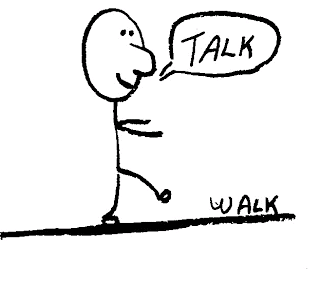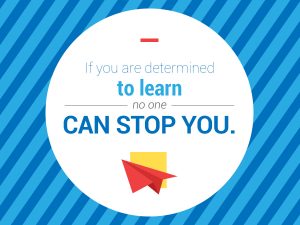Take your Learning Outside
Take your Learning Outside
We associate learning with computer screens and books while being hunched over a desk with a cup of coffee on the side. But recently, I decided to try out a new method.

It was a beautiful day. The sun was shining, the sky was blue, and the air was fresh and crisp. It seemed so depressing to sit indoors, so I suggested to my student that we take a walk in the park.
With the current situation surrounding the Corona Virus and the time of posting this article, this may be difficult for you. If that’s the case then you can walk around your house, backyard, or take a quick walk down the street, if allowed.
Walk and Talk
I had to think creatively, and decided that we should write a monologue. I frantically typed in the notes on my phone while the student recited what we were doing and seeing, using the environment as her inspiration. Here’s an example:
I’m walking in the park.
It’s a warm, spring day and the sun is shining.
There are many people here.
Some are playing football, others are relaxing on benches.
A couple of people are working out.
As you can see, I like to keep the sentences short and easy, but feel free to get creative. Your monologue could turn into a poem. As my student recited her thoughts, I paused very briefly to talk about any mistakes or grammar rules that came up, but I didn’t want to disturb the flow.
If you try this exercise alone, I suggest you save the corrections for later. This way you can really get the creative juices flowing.
Improvising is fun
For the second part of the class, we improvised some dialogues. I gave two different scenarios and we used them, and our acting skills, to produce as much language as possible. Here’s an example:
You’re sitting on a bench in the park and a guy who also wants to sit down comes over to you, but you don’t want him to sit on the bench and try to convince him that the bench is yours.
You’re probably going to need a partner for this exercise. Otherwise, you can play both parts and risk looking like a psycho, but either way, it’s so much fun. We got to use our bodies and our environment and interact with each other without having a screen between us. We laughed and we enjoyed the silliness of the scenario.
Another example could be:
You drop your chocolate bar on the floor and another person picks it up for you. You start to talk about food and end up sharing the chocolate bar.
What would you do if…
I used the last ten minutes in the hour to ask some random “what if” questions. These are also great for forcing out some language that you wouldn’t usually talk about. Here are some examples:
What would you do if you found 10.000 USD on the floor?
What would you do if you won the lottery jackpot?
What would you do if you smashed your mother’s favourite plate?
What would you do if you saw a cute guy, smiled at him, but then fell over and hit your face?
As you can see these are some fun examples. You can create these yourself and practice answering them. Record yourself to listen back to your pronunciation. I guess the point is to remember that learning language doesn’t have to be so rigid, and more specifically, doesn’t have to happen indoors.
Give it a try and let us know what methods you used. We’d love to hear about it.
Podcast: Play in new window | Download


Hello. he talks and reads very fast for me. Y can´t understan half of waat he say. Y angry. Y read and Y listen again and again.
Bye.
hello Martin! We are very happy to see you around here!! Some of these articles are for more advanced learners, some others can be followed more easily. Still don’t get discouraged, Keep listening (and reading at the same time). Every time you listen again you will understand a bit more. Time makes better! 😉
I can recommend that you check this one: https://en-ingles.com.ar/blog/2020/03/25/pete-is-sick/ and this one https://en-ingles.com.ar/blog/2020/02/06/4-tips-to-accelerate-your-learning/